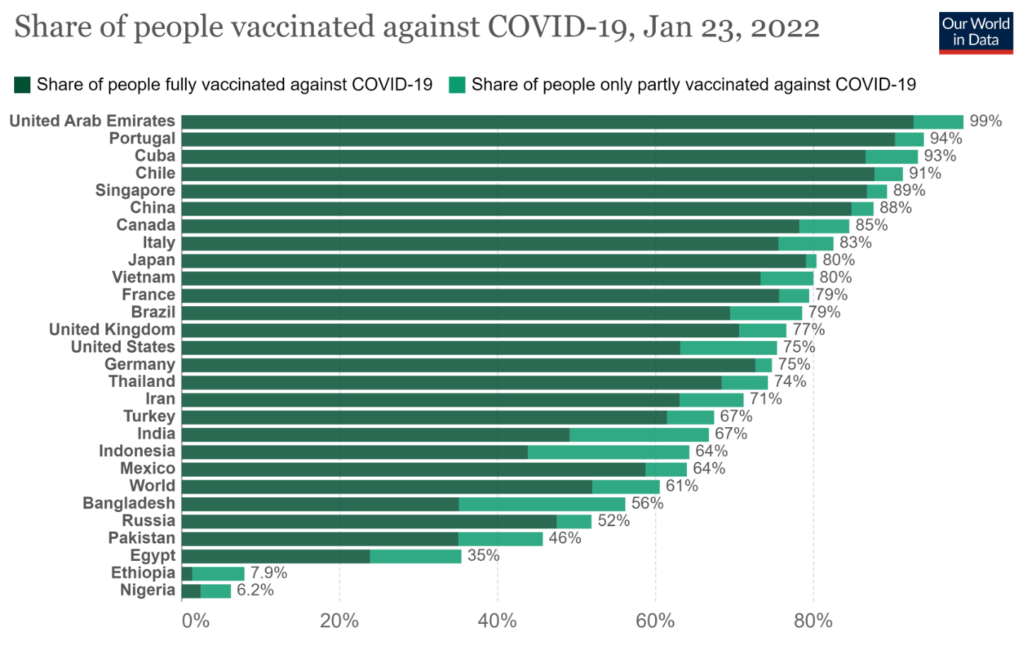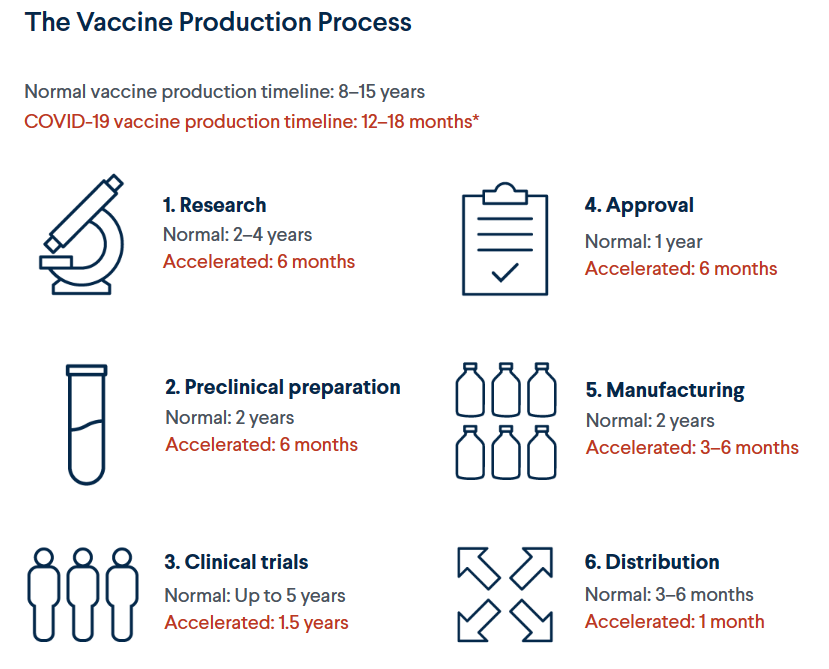No government, no vaccine

As of January 2023, at least 68% of the US population were fully vaccinated.
However, the high vaccination rate may not have been possible without government intervention.
At the start of the pandemic, Big Pharma showed little interest in the race to produce a vaccine. Why?
Firstly, under normal circumstances, it takes on average 8 to 15 years to get from the lab to the market.
Secondly, vaccines have not proven very profitable in the past. Vaccines usually need to be administered just once or twice. The big moneymakers for pharmaceutical companies are medications that require daily doses and long-term use.


In order to ensure work on a Covid-19 vaccine began, the US government provided large subsidies to Big Pharma.
The companies that received the largest subsidies were Moderna, Janssen, and Pfizer, who all received close to $1 billion for R&D.
Not only did these firms receive subsidies for R&D, the US government also signed purchase contracts with them ensuring sufficient demand for their vaccines. The US government signed a deal with Pfizer worth $6 billion for 300 million doses of the vaccine.
Profits of pharmaceutical companies have soared due to the pandemic. For example, Pfizer’s profits in 2021 more than doubled compared to the year before.
Moderna’s share price was trading at $19.52 at the end of 2019. It reached a high of $449.38 on 10th Sep 2021.


Pharmaceutical companies have been criticized for profiteering from the pandemic and not doing enough to help poorer nations. As of July 2022, the vaccination rate in some African countries was just 5%.
Some argue that pharmaceutical companies should not be awarded patents for Covid-19 vaccines when a significant portion of the R&D that went into the vaccines came from taxpayer’s money in the form of subsidies.
South Africa and India proposed a waiver on vaccine patents in order to bring down the price of Covid-19 vaccination, making them more affordable for African governments.
However, some say the waiver will not help poorer nations. They argue that a lack of syringes and poor infrastructure to distribute the shots are more urgent issues.
Vaccine hesitancy fueled by misinformation and a distrust of governments has also contributed to low vaccine rate in some countries, says Dr. Atuhebwe.

Questions
- Discuss the impact of subsidies given for Covid-19 vaccine R&D on welfare in the economy. Include an appropriate externalities diagram in your answer. (12)
- Assess the impact of a Covid-19 vaccine patent waiver on the vaccination rate in Africa. Include a supply and demand diagram in your answer. (10)
Question 1:
- Define subsidy.
- Draw an externalities diagram showing the impact of a subsidy.
- What happens to price, quantity, and welfare gain?
- Why might the impact of subsidies be limited?
Question 2:
- Define patents.
- Draw a supply and demand diagram showing the impact of the patent waiver.
- What happens to price, quantity, and vaccination rates in Africa?
- Why might the patent waiver have little impact on the vaccination rate?
